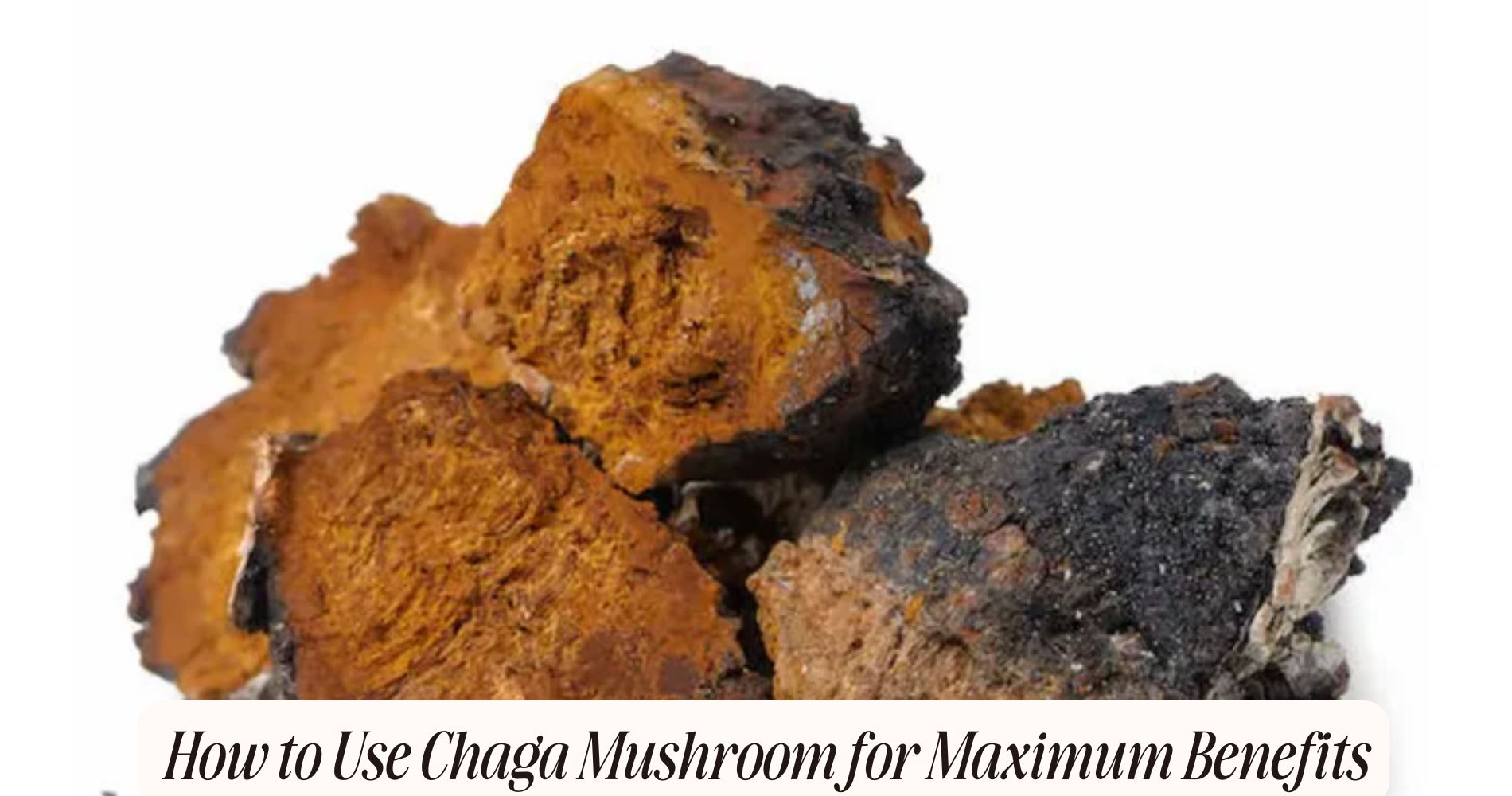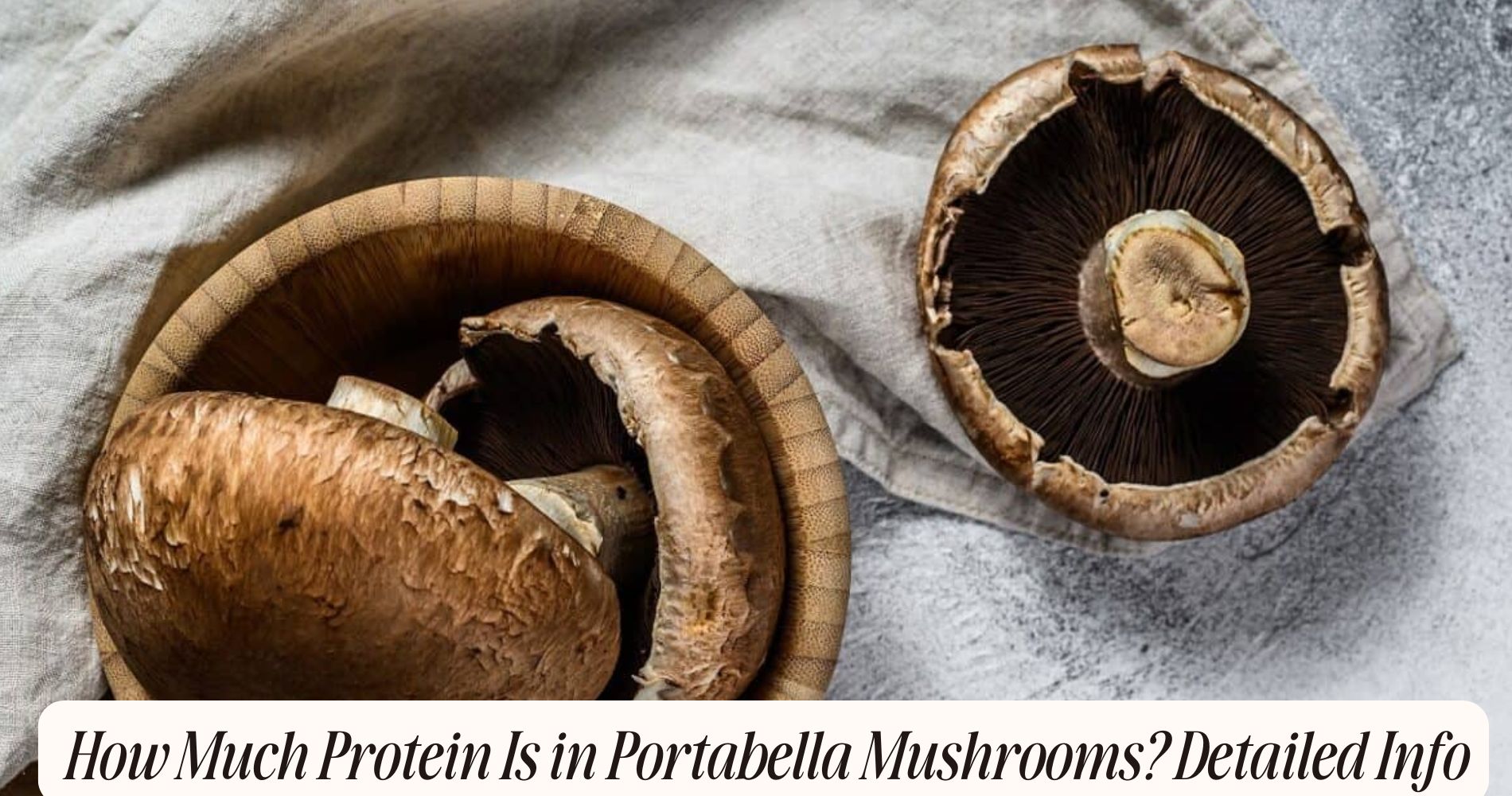
How to Use Chaga Mushroom for Maximum Benefits
How to use chaga mushroom? To maximize the benefits of Chaga mushroom, source high-quality, wild-harvested Chaga from reputable suppliers. You can prepare it as a tea by breaking dried chunks into smaller pieces and simmering them in hot water for 30 to 60 minutes. For easier consumption, consider supplements in powder or tincture form. The recommended daily dosage ranges from 1,000 to 2,000 mg, and consistency is key for effectiveness. Be mindful of potential side effects and monitor your body's reaction. By exploring different preparation methods, you can enhance flavor and benefits, so there's much more to discover about incorporating Chaga into your routine.
Understanding Chaga Mushroom
Chaga mushroom, scientifically known as Inonotus obliquus, is a prominent medicinal fungus that primarily grows on birch trees in cold climates. Its history dates back centuries, particularly in traditional medicine practices among indigenous peoples in Siberia and other regions.
You'll find that chaga has been revered for its potential healing properties, often used to promote health and longevity.
When exploring chaga varieties, it's crucial to note that the most recognized form is the dark, woody conk that grows on the birch tree. However, you might also come across variations depending on the host tree and geographical location.

The appearance can vary, but it typically features a black exterior with a rusty-brown interior, which contains a rich array of bioactive compounds such as polysaccharides, antioxidants, and triterpenes.
As you investigate deeper into understanding chaga, you'll realize its adaptability to different environments and its historical significance in herbal medicine.
This knowledge not only enhances your appreciation for this remarkable fungus but also sets the stage for exploring its various uses and potential health benefits.
Health Benefits of Chaga
When you consider incorporating chaga mushroom into your routine, you'll find it offers significant health benefits, particularly in supporting your immune system.
Its powerful antioxidant properties help combat oxidative stress, while its anti-inflammatory effects can reduce inflammation in the body.
Understanding these benefits can empower you to make informed choices about your health.
Immune System Support
One of the most significant benefits of Chaga mushroom is its ability to support the immune system. Research indicates that Chaga can enhance the immune response through its unique compounds, promoting immune modulation that helps your body adapt to various challenges.
By utilizing chaga synergy with other herbal combinations, you can potentially amplify these effects, tailoring your approach to seasonal usage or specific lifestyle factors.
When considering dosage variations, it's crucial to find what works best for you. Some individuals may experience benefits with lower doses, while others might require higher amounts.
Preparation methods, such as brewing tea or creating tinctures, can also influence the potency and absorption of the active compounds.
Long-term effects of consistent Chaga consumption may include improved resilience against infections and a more balanced immune system.
Many have shared personal experiences of enhanced overall wellness after incorporating Chaga into their daily routine.
Antioxidant Properties
Regularly harnessing the antioxidant properties of Chaga mushroom can greatly enhance your overall health. Chaga contains potent chaga compounds that exhibit remarkable antioxidant mechanisms, which help neutralize free radicals in your body. These free radicals contribute to oxidative stress, a condition that can damage cellular structures and lead to various health issues. By incorporating Chaga into your diet, you can markedly improve your cellular protection against such damage.

Research indicates that the antioxidant effects of Chaga may also positively influence several health markers, promoting overall well-being. The synergistic effects of its bioactive compounds work together to boost your body's natural defenses, enhancing not only your immune system but also your longevity benefits.
You may find that regular consumption of Chaga supports healthier aging by reducing oxidative stress and its associated risks.
Incorporating Chaga into your routine—whether through teas, tinctures, or powders—can be an effective strategy for maximizing these antioxidant benefits. By doing so, you're not just addressing immediate health concerns; you're also investing in long-term well-being.
Embrace Chaga as a powerful ally in your journey toward better health and longevity.
Anti-Inflammatory Effects
Chaga mushroom is renowned not only for its antioxidant properties but also for its impressive anti-inflammatory effects. Research shows that chaga compounds, such as betulinic acid and polysaccharides, play a significant role in inflammation reduction. These bioactive substances help modulate the immune response, preventing chronic inflammation that can lead to various diseases.
When you incorporate chaga into your diet, whether as a tea or supplement, you're tapping into its potential to alleviate symptoms associated with inflammatory conditions. Studies suggest that the anti-inflammatory properties of chaga may benefit those with arthritis, heart disease, and even autoimmune disorders. By reducing inflammation, chaga can help improve your overall quality of life.
To maximize these effects, consider using chaga in combination with other anti-inflammatory foods, such as turmeric or ginger. This synergistic approach can enhance the overall impact on inflammation reduction.
Choosing the Right Chaga
When you're selecting Chaga mushroom, it's essential to source it from reputable suppliers who prioritize quality and sustainability.
Look for products that are certified organic and ideally harvested from birch trees in pristine environments, as this guarantees higher potency.
Additionally, familiarize yourself with the characteristics of authentic Chaga to avoid counterfeit products that may lack the beneficial compounds you're seeking.
Sourcing Quality Chaga
Although it's easy to be overwhelmed by the various options available, sourcing quality chaga requires careful consideration of several key factors. Start by examining the sourcing methods employed by suppliers. Wild-harvested chaga is often preferred, as it typically indicates a higher concentration of beneficial compounds compared to cultivated varieties. Confirm that the mushrooms are harvested sustainably, as overharvesting can lead to ecological damage and decrease the quality of the product.

Next, look for quality indicators that suggest a superior product. High-quality chaga should appear dark brown to black on the outside, with a light interior that has a cork-like texture. Avoid any chaga that appears overly dry or has a powdery consistency, as these may indicate poor storage or age.
Additionally, consider the supplier's reputation. Research their practices and customer reviews to confirm they prioritize quality and transparency. Certificates of analysis can also provide insights into the chaga's potency and purity.
Identifying Authentic Products
To effectively choose the right chaga, it's essential to recognize the key characteristics that distinguish authentic products from inferior ones. Start by seeking certified sources that adhere to stringent quality assurance practices.
Always examine product labels for clear ingredient transparency, ensuring that the chaga is sourced ethically and sustainably. Look for indications of third-party testing, which confirms the product's purity and potency. This testing helps verify that the chaga contains the beneficial compounds you're after, free from contaminants.
Research the vendor's reputation—trustworthy suppliers often have positive reviews and a history of ethical sourcing practices. Additionally, consider sustainability practices employed by the vendor.
Chaga is harvested from birch trees, and overharvesting can lead to ecological harm. Responsible vendors prioritize sustainable harvesting methods, ensuring the longevity of this valuable resource.
Preparing Chaga for Consumption
Preparing Chaga for consumption involves a few essential steps that guarantee you maximize its health benefits and flavor.
First, choose the right Chaga; you want to select high-quality, dried chunks or powder. If you're using chunks, it's best to break them into smaller pieces to increase surface area and enhance extraction during preparation.
Next, explore different Chaga preparation methods. You can create a decoction by simmering Chaga in water for at least 30 minutes. This process extracts the beneficial compounds while softening the texture, making it easier to digest.
If you prefer a more concentrated extract, consider using alcohol or glycerin, which can pull out different phytonutrients effectively.
For ideal freshness, remember these Chaga storage tips: keep your dried Chaga in an airtight container, stored in a cool, dark place away from moisture and light. This helps preserve its active compounds for longer periods.
If you've prepared a Chaga extract, store it in the refrigerator to maintain its potency. Following these guidelines guarantees that you'll enjoy the maximum benefits of Chaga in your daily routine.
Brewing Chaga Tea
To brew a flavorful cup of Chaga tea, you need to start with high-quality Chaga mushroom sourced from reputable suppliers.
Understanding various brewing techniques can greatly affect the extraction of beneficial compounds while enhancing the overall taste of your tea.
You can also explore different flavor options to complement the earthy notes of Chaga, making your beverage more enjoyable.
Selecting Quality Chaga
When selecting quality chaga for brewing tea, you'll want to contemplate several key factors to confirm you're getting the most potent and beneficial product.
First, consider chaga sourcing; ideally, it should come from pristine environments, such as birch forests in cold northern climates, where it thrives. This guarantees that the chaga isn't only fresh but also free from contaminants.
Next, examine the chaga's appearance. High-quality chunks should be dark brown to black, with a rough texture. They should be dense and heavy, indicating a higher concentration of beneficial compounds like polysaccharides and antioxidants. Avoid any chaga that appears powdery or has a greenish tint, as this may indicate inferior quality or spoilage.
Additionally, check for third-party testing and certifications from reputable suppliers. This can help verify the chaga quality and confirm it's free from harmful substances.
Finally, consider purchasing whole chunks rather than powdered forms, as whole pieces retain their potency longer and allow for better extraction during brewing.
Brewing Techniques Overview
Brewing chaga tea typically involves a few key techniques that maximize flavor and health benefits. First, choose your brewing methods wisely. Common techniques include simmering and cold brewing, each affecting the extraction of nutrients differently.
For hot brewing, maintain temperature control; a range of 185°F to 200°F is ideal. This helps extract polysaccharides and antioxidants efficiently.
Steeping times can vary, but aim for 30 to 60 minutes for the best results. Longer steeping times may lead to stronger flavor profiles, while shorter periods yield a milder taste. Utilize appropriate brewing equipment, such as a saucepan or French press, to enhance your experience.
Traditional practices often recommend the use of dried chaga chunks or powdered forms, depending on your preference. Experiment with recipe variations by adding other herbs or spices to create unique blends.
Enhancing Flavor Options
After mastering the brewing techniques for chaga tea, you can take your experience to the next level by enhancing its flavor profile. While chaga itself has a mild, earthy taste, experimenting with various chaga flavoring options can elevate your tea to new heights.
Consider adding natural sweeteners like honey or maple syrup; they not only complement the earthy notes but also add health benefits.
Herbs and spices are excellent additions to your chaga recipes. Try incorporating cinnamon, ginger, or vanilla for a warm, comforting flavor. Each of these ingredients not only enhances taste but also brings their own health properties, such as anti-inflammatory effects.
You can also mix in citrus fruits, like lemon or orange, to introduce a revitalizing acidity that brightens the drink. Adding a splash of coconut milk can create a creamy texture, transforming your tea into a soothing beverage.
Experimenting with these diverse chaga flavoring methods allows you to customize your tea, making it more enjoyable and palatable. As you refine your recipes, you'll discover the perfect balance that suits your taste and maximizes the benefits of this powerful mushroom.
Using Chaga in Smoothies
Incorporating Chaga mushroom into your smoothies is a fantastic way to boost their nutritional profile and enhance their health benefits. Rich in antioxidants and polysaccharides, Chaga supports immune function and overall wellness. You can easily add Chaga powder to your daily smoothies without compromising flavor.
Try blending it with banana and spinach for a nutritious mix that disguises its earthy notes. For flavor combinations, consider pairing Chaga with berries, which not only complement its taste but also pack in additional antioxidants. If you're making post-workout smoothies, adding Chaga to a protein-rich mix with almond milk and nut butter can serve as an effective energy booster.
Texture tips are crucial when using Chaga; make sure you blend it well to avoid any graininess. For best results, combine it with creamy ingredients like avocado or yogurt, which enhance texture and provide healthy fats.
Experiment with various ingredient pairings, including cacao for a chocolatey twist or coconut milk for a tropical flair. By integrating Chaga into your smoothie recipes, you'll create delicious, nutritious blends that support your health while maintaining great taste.
Incorporating Chaga Supplements
When it comes to boosting your health, adding Chaga supplements to your routine can be a game changer. These supplements come in various forms, including powders, capsules, and tinctures, allowing you to choose what best fits your lifestyle.
Each form has its own benefits; for instance, powders can easily be mixed into drinks, while capsules offer a convenient option for on-the-go supplementation.

When incorporating Chaga, it's vital to evaluate chaga dosage variations to maximize its potential benefits. Research suggests that a daily dosage of 1,000 to 2,000 mg can be effective for most individuals, but it's important to start with a lower amount and gradually increase it.
This approach helps you monitor your body's response and minimizes the risk of adverse effects.
Always consult with a healthcare professional before starting any new supplement regimen, especially if you're pregnant, nursing, or have existing health conditions.
Cooking With Chaga
Cooking with Chaga can elevate both the flavor and nutritional profile of your meals. This versatile mushroom, known for its earthy and slightly bitter taste, can be incorporated into various dishes.
When you're looking for chaga recipes, consider starting with chaga-infused broths or teas. Simply simmer dried chaga in water for several hours, then use this nutrient-rich liquid as a base for soups or stews.
Flavor pairings are essential when cooking with Chaga. It complements robust ingredients like garlic, ginger, and earthy vegetables such as mushrooms and root vegetables. For a unique twist, try adding chaga powder to your morning smoothies or oatmeal. It pairs well with cocoa, vanilla, and cinnamon, enhancing both taste and health benefits.
You can also experiment with chaga in baked goods. Incorporating a small amount of chaga powder into recipes for muffins or pancakes can add depth while providing antioxidants and immune support.
Dosage Guidelines for Chaga
Determining the right dosage of chaga mushroom is vital for maximizing its health benefits while minimizing potential side effects. The recommended chaga dosage varies based on the form you're using—whether it's powder, extract, or tea. For chaga powder, you can typically start with 1 to 3 grams per day.
If you're using a chaga extract, follow the manufacturer's instructions, as concentrations can differ considerably. Generally, a common dosage for tinctures or liquid extracts is between 0.5 to 2 mL daily.
When it comes to chaga administration, consistency is key. Regular intake allows your body to adapt and absorb the beneficial compounds more effectively. You can incorporate chaga into your daily routine by adding it to smoothies, teas, or soups, ensuring you meet your dosage goals.
Always consult your healthcare provider, especially if you're pregnant, nursing, or have pre-existing health conditions, to tailor the dosage to your individual needs.
Monitoring your body's response is essential, and adjusting your intake accordingly can enhance the benefits you experience from this powerful mushroom.
Potential Side Effects of Chaga
Chaga mushroom's numerous health benefits can sometimes come with potential side effects that users should be aware of. First, it's essential to adhere to appropriate chaga dosage guidelines, as excessive intake may lead to chaga toxicity, resulting in gastrointestinal discomfort or liver issues.
Additionally, chaga can interact with certain medications, particularly anticoagulants and immunosuppressants, raising concerns about chaga interactions that could compromise your health.
You should also consider chaga contraindications, especially if you have pre-existing health conditions like diabetes or are preparing for surgery, as chaga can affect blood sugar levels and blood clotting.
Allergies to chaga are rare, but they can occur; symptoms may include skin rashes or respiratory issues. If you notice these reactions, discontinue use immediately.
Lastly, chaga safety is paramount. Always consult with a healthcare professional before incorporating chaga into your routine, particularly if you're pregnant, nursing, or taking other medications.
Unlock the Power of Mushrooms with Well Gummies' Ultimate Wellness Bundle
For a simple and delicious way to enjoy the benefits of mushrooms like chaga, try Well Gummies' Ultimate Wellness Bundle. This convenient gum chew includes All-in-One Mushroom Gummies for daily support and Lion's Mane Focus and Energy Gummies for a quick boost whenever needed. Packed with 10 powerful mushroom types, these vegan gummies fuel your brain, enhance focus, and support immune health. Enjoy the fresh wild berry flavor with no jitters or crashes—just steady energy to help you feel your best all day long!
Frequently Asked Questions
Can Children Safely Consume Chaga Mushrooms?
You should consult a healthcare professional before giving chaga to children. While chaga offers various benefits, appropriate chaga dosage for kids isn't well-established, and their safety during consumption needs careful consideration.
Is Chaga Mushroom Safe for Pregnant or Breastfeeding Women?
Chaga mushrooms may offer benefits, but you should exercise caution during pregnancy or breastfeeding. There's limited research on their safety in these conditions, so consult your healthcare provider before incorporating chaga into your routine.
How Long Does Chaga Mushroom Stay Fresh?
Chaga mushrooms typically stay fresh for about 1 to 2 years when stored properly. For ideal chaga storage, keep them in a cool, dark place to maintain their shelf life and preserve beneficial compounds.
Can Chaga Be Combined With Other Herbal Supplements?
Yes, you can combine chaga with other herbal supplements. Doing so enhances chaga benefits, especially in specific chaga preparations. Always consult a healthcare professional to guarantee compatibility and maximize the positive effects of the combination.
Where Can I Find Wild Chaga Mushrooms?
You can find wild chaga mushrooms in birch forests. Use foraging techniques like looking for dark, irregular growths on tree trunks. Research local chaga locations to increase your chances of successful foraging and harvesting.
Conclusion
Incorporating chaga mushroom into your wellness routine can greatly enhance your health. By understanding its benefits, choosing high-quality sources, and preparing it effectively, you'll maximize its potential. Whether you brew tea, use supplements, or cook with it, chaga offers a wealth of nutrients and antioxidants. Just remember to follow dosage guidelines and watch for any side effects. With mindful use, chaga can be a powerful ally in supporting your overall well-being.




